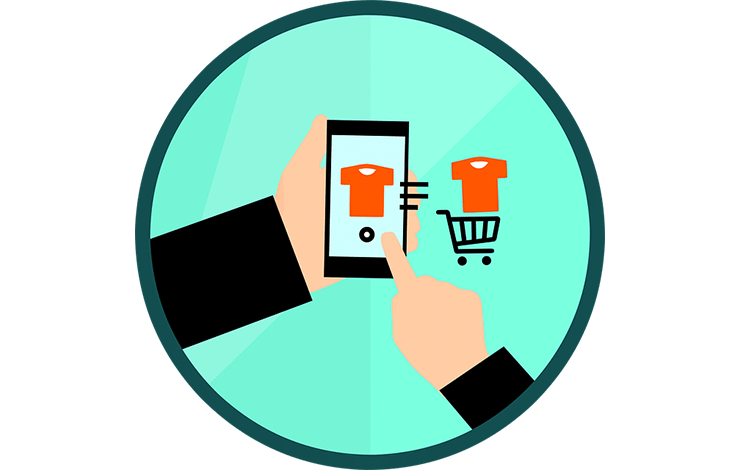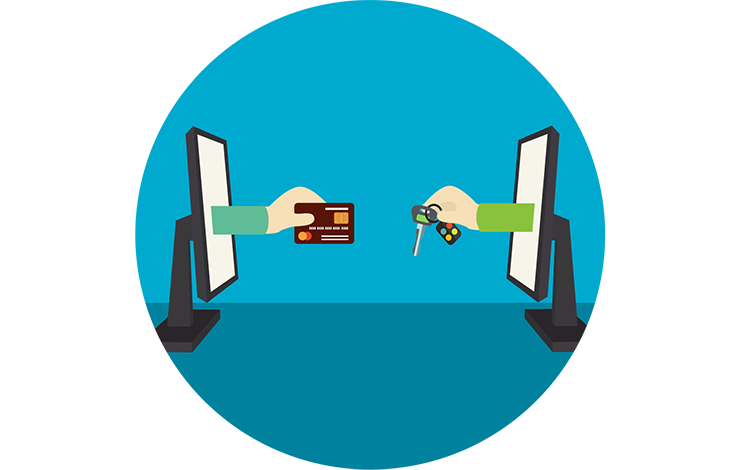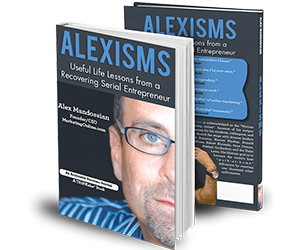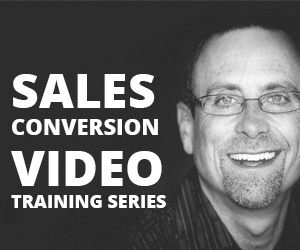Don’t Sell Your Product Until You Understand Product Consumption Theory

Welcome to 2020!
To kick off the year I thought we’d go back to some marketing basics. Let’s build a great foundation for a year dedicated to your entrepreneurial success!
What are the basics? Well, let’s start with your customer and go from there.
What is Product Consumption Theory?
Product Consumption Theory is a phrase I coined about 12 years ago to study how people consume products and services. I wanted to study this to develop stick strategies for those products and services.
A stick strategy is a way of keeping people coming back to use your products and services; strategies that stick your brand to your customer.
It’s kind of like when you see a movie and you think, “I love Dwayne Johnson. What other movies has he done? I’m going to watch them all!” Then you go watch all his movies, consume his products.
What’s the stick strategy?
DJ’s talent and charisma. Studying the “talent” or effectiveness and charisma of products and services is what I call Product Consumption Theory. I love studying PCT because this is where we learn how to interact with our Ideal Customer in the marketplace.
Related Post: Discover How Easily You Can Sell Anything
Related Post: Your Survivor’s Guide to Market Research
Related Post: 4 New Ways to Sell Anything
Why Study Product Consumption Theory?
Knowing how your client consumes your product or service is just as important as knowing your client. Why? Because when you know how they consume you can devise strategies that aid them in continuing to use your product or service.
A repeat customer is waaayyyy better than a first-time buyer. Why? Because with a repeat customer there is no customer acquisition, there is little-to-no marketing dollars, there is no lead magnet, sales funnel, etc.
A repeat customer collapses the sales cycle. Dwayne Johnson and the production company who got you to see his latest movie now has no work to do while you hunt for his other movies on Amazon or Netflix. Get it?
Besides creating stick strategies there’s another reason to study PCT. I call it the 28 Day Curse. My friend, Dave Buck is the founder and CEO of CoachVille. He’s a master coach, speaker and trainer and he’s trained thousands of coaches with his certification program over the last 20 years.
He tracks a pattern he sees in many of the coaches that come through his cert program. They start out raring to go, enthusiasm carries them along. And then at about 28 days they begin to drift. As the days go on they drift farther and farther from their stated goals and their enthusiasm wanes. They start to drift away from his service.
That’s a pretty common experience for most entrepreneurs.
So how do you stop drift in your clients?
That’s the purpose of studying product consumption.
Another way to understand drift in product consumption is looking at how many use a product from start to finish vs. starting the product but not finishing it. Let’s take a book. Let’s take The Goldfinch.
Kobo is the U.K.’s biggest e-book publisher and it keeps stats on how many people complete their e-books. In 2014 only 44.4% of people who purchased The Goldfinch actually finished reading it. The Goldfinch is a Pulitzer Prize-winning, NYT’s bestselling book, and less than half the people who bought it finished it.
You know what kinds of books Brits like to finish? Thrillers, mysteries and romance novels. Product Consumption Theory studies why people don’t finish something. Once we know why we can create strategies to solve this problem.

The Product Experience
The Product Experience is how someone experiences your product or service. And knowing the product experience of your customers and clients helps you create those stick strategies.
As a competitive entrepreneur it’s not enough to sell a product and move on to the next wallet and set of eyeballs. It’s important, maybe even more important, to interact with your one-time customers and turn them into repeat buyers.
In my opinion it’s better to get 10 sales of people consuming 80% of your product than 100 sales with only 4% consumption.
A hundred sales sounds better and is initially more profitable but true wealth for the entrepreneur comes from the backend, the repeat customer. The people who are more likely to become repeat customers are the ones who consumed at least 80% of your product or service.
Wouldn’t you rather have 10 repeat customers rather than 4 repeat customers? Fewer buyers with greater consumption sounds a bit controversial but it’s much more effective than spending all your energy and marketing dollars on getting new buyers in the door.
Focusing your energy on the customer experience of those 10 repeat customers is more effective and profitable. And that’s why I study Product Consumption. I want people to be happy. And I want those happy people to keep coming back.
Look at it this way, it’s much easier and much more in your control to create and enhance your customer’s or client’s experience once they’ve bought than trying to turn suspects into prospects or hunt for new leads. Yes or yes?
And your own experience as an entrepreneur will be enhanced because you’re focusing on what you love: interacting with the customer and tweaking their experience. And not focusing on marketing and leads.
Bring Your Ideal Customer to Life! Break Through to Them With Your Marketing, DRIVE Your Sales, and Motivate Them To Join Your HIGH END Programs
The Consumption Matrix
In order to study the customer experience I created a matrix that tracks how customers consume. There are three parts to this matrix, and I call it:
P.O.C. = Point of Consumption
The P.O.C. is made of three aspects of study:
The “Where”
The “where” is the very first contact your customer makes with your product. Where are they buying? Do they see your ad on Facebook and click to your lead magnet or sales page?
Do they find your service on a aggregator site like Thumbtack?
Do they purchase your service on your website? How did they find your website?
When you study and find out the answer to P.O.C. you can streamline your marketing dollars and you can put more money into enhancing that first point of contact.
The “Why”
The second point of the matrix is finding why they are consuming your product or service.
What brought them to you? For instance, if you’re a coach, are your customers coming to you for business coaching? For time management? For weight or exercise motivation?
What’s their why?
The “How”
The final part of the matrix is looking at how your customers interact with your product or service. Are they reading an e-book? Are they getting coaching sessions from you through Zoom or Go-To Meeting?
Maybe your service is a membership site. Do they access the site through an app or straight from their desktop or laptop?
Knowing the P.O.C., the Where, the Why and the How of each customer can help you build a better experience for their initial impression through to their final session with you.
An experience that will leave them wanting more rather than “drifting” away to the next shiny penny.
See why Product Consumption Theory is so important?
Ok, so?
Now that you’ve defined the product experience for your customers, so what? What do you do with that info?
You can use this information in a number of ways. If you’ve got a solid product or service you can enhance the on-boarding experience for your clients.
If you’re in the creation stages of your new product or service you can develop an on-boarding program alongside your product.
If your product or service is less than stellar and needs some work you can use this info to figure out what your clients are looking for and wanting from you.
But one of the most intriguing and rewarding ways to use this info is in creating your clients’ first impressions.
Way back when I was developing one of my first and most successful products for entrepreneurs, Teleseminar Secrets, I hired an ingenious guy. He’s now my peer in the marketing world, Stu McClaren.
Stu and I came up with a easy way to get people on-board fast and get them using Teleseminar Secrets successfully. We created a series of quick start videos that we titled Start Here.

A Secret Weapon in the Fight Against Drift
Teleseminar Secrets is one of my most successful programs to date. And I believe it was successful and had staying power because we got people initiated very quickly. Immediately after signing up and buying the program they new where to go and how to start using my product successfully.
Quick Start Guides are essential to programs, products and services. A good QSG will teach someone how to use your product or service within minutes. Helping your new customer figure out exactly how to use your product will instill them with a confidence that will stick with them.
Do not underestimate that confidence. It is that feeling that will travel with them through the stages of your program, membership site, product, or coaching service.
The entire goal of a Quick Start Guide is to fill your new customer with confidence so they keep going and make using your product a habit. It will also give them the confidence to explore your product or service so they continue to use it. This is one of the most important tools that will help eliminate drift.
Never underestimate a good User Manual, especially one with a Quick Start Guide. They are not just for Blu-Ray’s and microwaves.
You need something that sets you apart from your competitors. And you need to make the role of your customer within your paradigm very clear.
You are literally indoctrinating them into your world, so be clear, consistent and instill them with confidence to get started.
Troubleshooting Your Customer’s Product Experience
The point of gathering all this information is to create a unique and wonderful customer experience. You can use this information in several important ways.
- creating an ease-of-use experience for your customer
- instilling your client with confidence in using your product or service
- making an indelible first impression
One of the biggest ways to use this information is to let your customer in on their own experience. Describe to them the customer experience you want and expect them to have.
By doing this you are setting your customer up for success and managing their expectations. You can serve up almost any experience with success if you manage expectations properly.
Let’s look at how.
#1 – Define the Customer Experience
You’ve spend a lot of time figuring the P.O.C. = the Where, the Why and the How of your customer’s experience. Now take that info and give it right back to them.
Describe to them their optimal Point of Consumption.
“Our product is best experienced on your laptop or desktop for an optimized experience.”
“We’ve got an app that allows you to take us with you everywhere you go!”
This allows the customer to figure out how to get the most out of their first impression.
Next, describe how best to use your product or service. This is obvious information if you’re selling a physical product that might be new to the user.
But what about a webinar series, an online coaching program, or a membership site? Describing the Ideal Customer Experience to your new client or member is essential to their success.
#2 – Quick Start Guide
Define your client’s Customer Experience in your “Start Here” tab or Quick Start Guide. The QSG will set them up for success and manage their expectations immediately.
And it will help them navigate the next steps: where to go, how to start, who to talk to for issues.
#3 – Support Staff – Help Desk
Another bit of information to include in the QSG is your support staff or Help Desk contact info. This should be prominent and repeated. This is a small gesture that will make your new member or client feel absolutely taken care of. In fact, there very first place to list your Support or Help Desk info is on your Thank You page after they’ve bought your product or service.
#4 – Game-ifying the Product Experience
I’ve found that game-ifying my programs has made them fun and engaging for my clients. What do I mean?
In my courses and membership site I challenge my members with contests and prizes. This incentivizes people to continue or finish a course.
I do quick quizzes on the subjects they’re learning and offer all kinds of prizes: cash, discounts on the next upcoming course, etc.
I’ve found that doing this increases engagement, helps people finish their courses with me and keeps people inspired to come back and stay connected.
All these strategies will help your new clients stick with and succeed in your programs and services.
Related Post: Discover How Easily You Can Sell Anything
Related Post: Your Survivor’s Guide to Market Research
Related Post: 4 New Ways to Sell Anything

The Wrap Up
Product Consumption Theory, the study of how your products and services are consumed, goes hand in hand with researching your ideal customer and all of your other market research.
Knowing how a customer wants to experience your service vs. the actual experience is invaluable knowledge.
This knowledge will directly feed your bottom line by turning one-time buyers and drifters into lifelong customers, clients, members and followers.
I hope this information has opened some new avenues of inspiration for you. Armed with this new info you can create exciting products and services and now be in charge of how your clients experience them.
Btw, how is your ideal customer research going? Click here for a comprehensive customer avatar worksheet. This free worksheet takes the guessing out of figuring out who your ideal client is and what to do for them.
Do you have a membership site for your clients?
Do you offer comprehensive coaching services that could use a little more “frontloading” inspiration?
I want to hear from you! Join the Conversation>>













